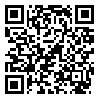







































BibTeX | RIS | EndNote | Medlars | ProCite | Reference Manager | RefWorks
Send citation to:
URL: http://journal.iehfs.ir/article-1-185-en.html

 , Ahmad Heidari Pahlavian *1
, Ahmad Heidari Pahlavian *1 
 , Mehdi Akbarzadeh
, Mehdi Akbarzadeh 
 , Majid Motamedzade
, Majid Motamedzade 
 , Rashid Heidari Moghadam
, Rashid Heidari Moghadam 

Introduction: As workplaces, hospitals are filled with stressors, including environmental and physical stressors (such as noise pollution and poor lighting), human stressors (such as conflicts with colleagues) and organizational stressors (such as heavy workloads and unsuitable work shifts). The inability to cope with these stressors entails physical, psychological and behavioral outcomes for the employees. The present study was conducted to evaluate job stress in nursing personnel and to design a model for assessing the severity of musculoskeletal disorders caused by job stress among nurses.
Materials and Methods: The present cross-sectional analytical study was conducted on 500 nurses working in various teaching hospitals of Hamadan. Data were collected through four questionnaires, including the Job Content Questionnaire, Maslach’s Burnout Inventory, the Visual Analogue Scale and a Demographic Questionnaire. Data were then analyzed in SPSS-16 and LISREL-8.3 using descriptive statistics.
Results: The results of the structural equation modeling showed that job burnout has a mediating effect between the severity of musculoskeletal disorders and job stress. In other words, if factors contributing to job burnout are present, the psychosocial risk factors yielded by the Job Content Questionnaire then contribute to the severity of musculoskeletal disorders.
Conclusion: Given the negative effects of job stress among nurses, health decision-makers are recommended to take measures to reduce stressors such as the physical and psychological demands of the workplace, the lack of support and the lack of job security.
Received: 2015/03/15 | Accepted: 2015/11/24 | ePublished: 2015/11/30
| Rights and permissions | |
 |
This work is licensed under a Creative Commons Attribution-NonCommercial 4.0 International License. |




